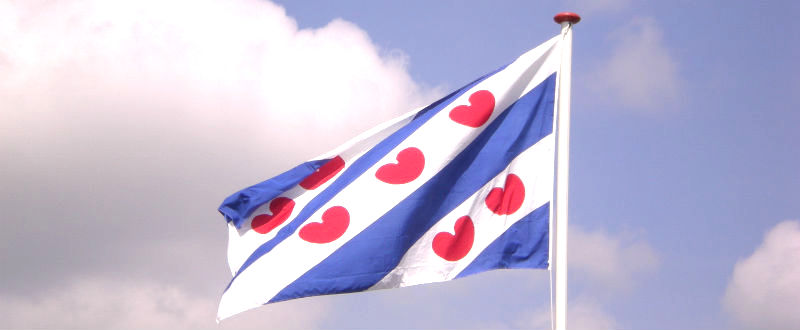 Have you ever wandered through the small Frisian cities and recognized the blue and white striped flag, with the red heart-shaped symbols on it? Right now, you can find it on bottles, postcards or in souvenir shops. I saw it around a hundred times, until I thought about, what the story behind the Frisian flag might be.
Have you ever wandered through the small Frisian cities and recognized the blue and white striped flag, with the red heart-shaped symbols on it? Right now, you can find it on bottles, postcards or in souvenir shops. I saw it around a hundred times, until I thought about, what the story behind the Frisian flag might be.
By: Leonhard Wildhagen
The Frisian flag can be seen everywhere in and around Leeuwarden. Especially in times of Leeuwarden as the capital of culture, the flag can be seen even more often. It consists of four blue and three white diagonal stripes. Within the white stripes, you can find seven red symbols, which are often mistaken as hearts. However, they are actually leaves of the water lily, or in Frisian called “Pompeblêden”.
Where does it come from?
A flag with lily leaves was already mentioned in the “Gudrunlied” from the 11 th. century and it was used by the Ommenlanden as banner of arms. From the 19 th. century on, the flag was used by the Frisian movement and in 1897, it was actually accepted by the Dutch government. In 1957, the flag was officially adopted by the States of Friesland.
What does it mean?
The seven red leaves on the flag are symbolizing the Frisian “Sea Countries” in the Middle Ages. They were independent regions, which were allied against the Vikings from the north. There are diverse sources about the number of seven leaves on the flag. Some are calling it a connotation for “many”, but some others are referring to the seven Frisian lands (Zeelanden), West Friesland, Westergoa, Eastergoa, Hunsingo, Fivelingo, Emsingo, and Jeverland. Concerning the blue stripes on the flag, some say, that they symbolize the Frisian rivers.
When you are walking around Leeuwarden the next time and you see the Frisian flag, just stop by.
